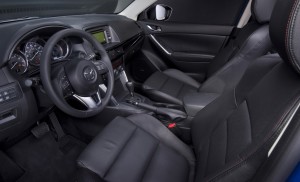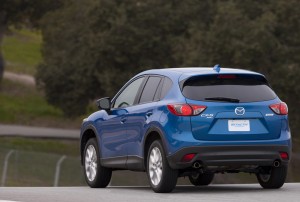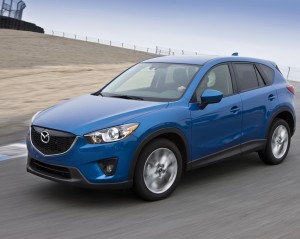
The 2013 Mazda CX-5 is the first vehicle to use the full suite of Skyactiv technologies, which includes engines, transmissions and body and chassis improvements.
When it comes to fuel economy, hybrids are all the rage, but Mazda is showing that there may be more more than one way to solve the problem.
Mazda’s new CX-5 offers the best fuel economy of any small crossover on the market. Not even the hybrids can beat it.
Mazda is betting the farm on what it’s calling Skyactiv technology. While its new 2.0-liter four cylinder was the first seen in the new 3 compact, the CX-5 employs the whole suite of Skyactiv bits including the new engine, transmissions and body and chassis components. All of this is in the name of fuel economy.
But this is Mazda, so it couldn’t be about just fuel economy. It had to be fun to drive.
Did Mazda succeed in making a fun-to-drive compact crossover – as much as oxymoron as that is? Let’s find out.
It’s true, the CX-5 is a fuel mileage champ. We consistently saw 33 mpg on mostly freeways and two-lanes. And it is somewhat fun to drive – as far as crossovers go.
As with just about any fuel economy champ – the CX-5 is acceleration-challenged. Call it the first law of automotive physics: Fast cars are inefficient users of fuel; fuel-efficient cars are slow.
With 155 horsepower, the CX-5 has less power than its competitors, so it’s not surprising that it isn’t as fast.
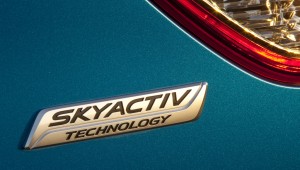
The goal of Mazda's Skyactiv technology is to reduce weight and increase fuel efficiency while maintaining driving fun.
But accelerative force is also a product of weight. That’s where the body and chassis elements of Skyactiv technology come into play. Mazda used new engineering techniques and more high-strength steel to reduce the weight by 220 pounds, giving the Mazda class-leading low weight, yet the automaker claims it is 30 percent stiffer. Front-drivers weigh a svelte 3,272 pounds, 3426 pounds for all-wheel drive.
So, the CX-5 is a featherweight, but 155 horses can only do so much. The result is leisurely acceleration and a lack of power for passing.
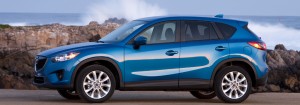
Mazda is counting on the CX-5 to replace both the swoopy CX-7 crossover as well as the Tribute, a twin of the Ford Escape.
Still, the CX-5 is a delight to drive. In fact, it’s somewhat carlike. There’s no getting around the fact that it’s tall, so it will never handle like a sports car, but for a crossover, it’s pretty good. Body roll is limited, there’s decent steering feel and grip is good. It tracks well on the freeway, too.
Skyactiv continues to the transmission as well. The CX-5’s six-speed automatic uses a combination of a clutch and a torque converter to increase fuel efficiency by 4 to 7 percent. Drivers will never know there’s anything special about it because it does its job unobtrusively.
The interior is Mazda typical. It looks sort of like a junior BMW. The controls work with precision and everything is easy to find. The front seats are roomy and comfortable on long trips.
The back seat is excellent. There’s plenty of kneeroom and headroom. Cargo space is also very good.
The CX-5 does double duty, replacing both the Tribute – a twin of the Ford Escape – and the CX-7, a crossover that was pitched as the sports car of crossovers.
The family resemblance to the CX-7 is immediately apparent, but it’s not as swoopy. More upright, the CX-5 has unique character lines that make for the best expression yet of Mazda’s current design features.
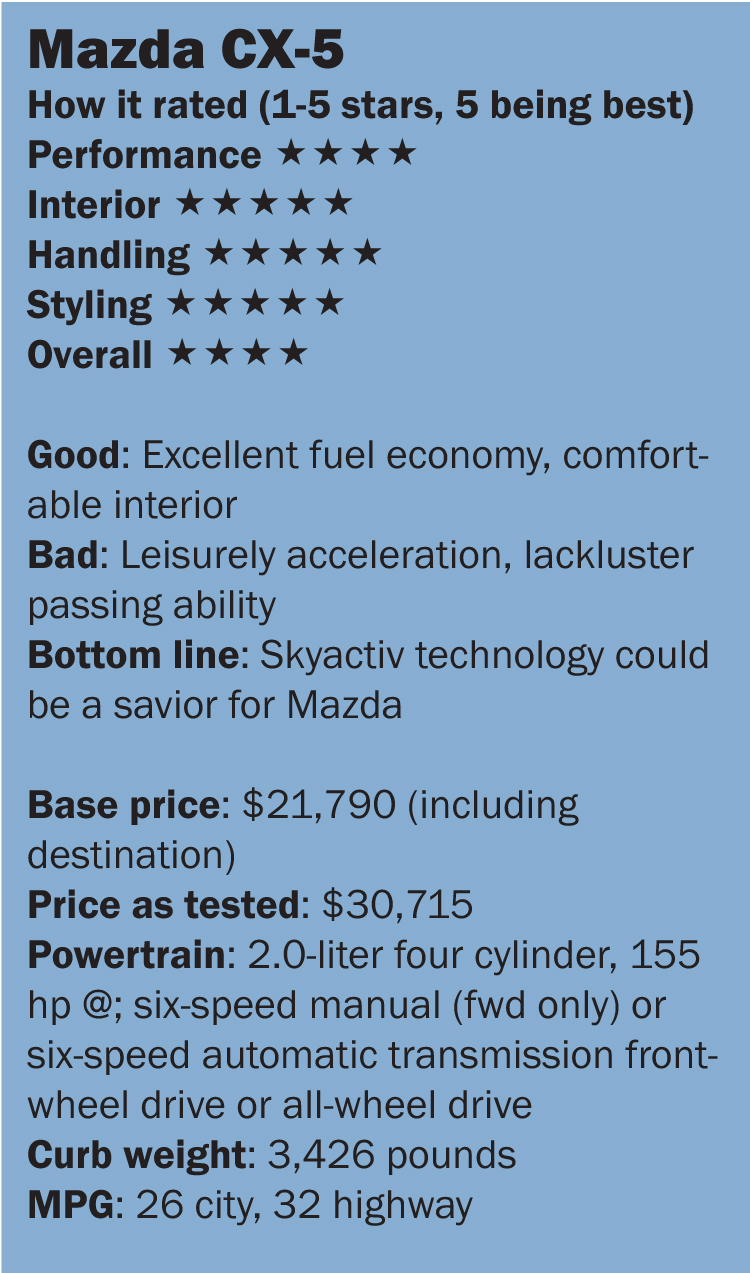 Prices open at $21,790, including destination for a model with front-wheel drive and a six-speed manual transmission. The six-speed automatic is a $1,400 option. All-wheel drive is a budget-friendly $1,250. The top-level Grand Touring model tested here starts at $28,140. With AWD and the $1,325 Grand Touring Technology package (navigation, keyless start, perimeter alarm, Xenon HID headlights and auto-dimming mirror with Homelink), the CX-5 spins the cash register to the tune of $30,715.
Prices open at $21,790, including destination for a model with front-wheel drive and a six-speed manual transmission. The six-speed automatic is a $1,400 option. All-wheel drive is a budget-friendly $1,250. The top-level Grand Touring model tested here starts at $28,140. With AWD and the $1,325 Grand Touring Technology package (navigation, keyless start, perimeter alarm, Xenon HID headlights and auto-dimming mirror with Homelink), the CX-5 spins the cash register to the tune of $30,715.
The CX-5 is a critical play for Mazda. No longer finding comfort under the wing of Ford, Mazda is out in the wilderness, trying to make a go of it when most smaller automakers are teaming up with bigger ones, particularly on advanced new powertrain technologies.
While the automaker has some great products – the 3, in particular, many of its iconic models have been poor sellers. The MX-5 Miata may be the best roadster in the world, but it doesn’t sell in enough numbers to matter. The company had to euthanize its rotary-powered RX-8 because of poor sales and even poorer fuel economy. And it still hasn’t found a winning formula for its 6 midsize sedan. Its big CX-9 crossover drives better than its competitors, but it’s smaller and buyers haven’t exactly made it a best seller. The 2 subcompact gets good reviews, but still sales suffer.
Skyactiv technology could change the game for Mazda. Watch the automaker make the best use of it a variety of future models.

